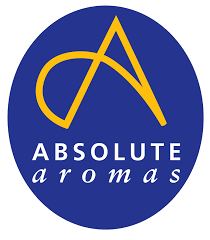
As Autumn blooms in all its spectacular colours, the long days have made way for dark evenings, chilly air and crisp, tumbling leaves. You may be spending more time in your home than in the past few months, and a great way to create ambiance and that cosy ‘Hygge’ feeling (pronounced “hoo-gah – it’s a Danish concept that encompasses a feeling of cosiness, warmth, and contentment). With many different products to choose from in supermarkets, homeware stores and other suppliers, we look at the use and benefits of the different home fragrance options available.
Diffusers
How it works: Diffusers, especially ultrasonic diffusers, use water and ultrasonic vibrations to disperse Essential Oils into a fine mist of water vapor. A diffuser needs power to operate, whether electricity or battery, so you will need access to a power source. A small plate in the diffuser will vibrate at speeds of up to two million movements per second, which turns the water and oil into miniscule droplets of water vapour which then disperses into the air.
Pros:
-Adds humidity to the air, which can be helpful in dry climates.
-Gentle scent dispersal without using heat, preserving the oils’ therapeutic properties.
-Oils can be blended to your requirement so there are lots of ways to experiment with fragrances and have fun being creative.
-Natural fragrances, no synthetics needed.
Cons:
-Needs water, refilling and gentle cleaning after a few uses.
-Limited to smaller spaces. Great in a living area or bedroom.
Best for: Relaxing environments, mild aromatherapy, or adding a subtle scent to a room.
Nebuliser
How it works: Nebulisers use pressurised air or an atomising process to turn Essential Oils into tiny particles, which are then dispersed directly into the air without water or heat. Usually, a bottle of one Essential Oil, or a blend of them, is attached or inserted into the machine which is a simple and clean process.
Pros:
-Creates a strong, concentrated aroma because it uses pure Essential Oils.
-No water or heat required, so therapeutic properties of oils remain intact and is therefore good to use in areas where humidity is a problem.
-Works well for larger spaces such as offices, open plan living areas.
-Clean and simple to use.
-Natural fragrances, no synthetics needed.
Cons:
-Can be slightly louder than other options.
-Uses more essential oil, making it a little more costly to operate.
-You’re restricted to what’s in the bottle – you can’t add oils directly to the machine.
Best for: Strong aromatherapy sessions, larger rooms, or therapeutic purposes.
Oil Burner
How it works: Oil burners use a small dish of oil and water placed over a candle or heat source. The heat warms the water and oil, releasing its scent.
Pros:
-Simple, inexpensive, and widely available.
-Offers a cosy ambiance with the candle’s glow.
-You can add Essential Oils to the bowl in your own blend so you can be creative.
-Oil burners can sometimes also be used to melt wax melts so can be versatile in this way.
Cons:
-Heat can alter the chemical structure of Essential Oils, reducing their therapeutic benefits.
-Requires supervision due to the open flame.
Best for: Occasional or decorative use, adding warmth and fragrance to a smaller room.
Pot Pourri
How it works: Potpourri scents a room by releasing the fragrance absorbed by objects such as dried flowers, herbs, stones, bark and shells etc. As air circulates around the pot pourri, it carries the fragrance throughout the space.
Pros:
-Natural Aesthetic: Potpourri is visually pleasing and can add a decorative element to a room.
– It’s synthetic-chemical-free. When made with natural ingredients, pot pourri offers a scent option without synthetic chemicals, which some people find preferable.
-It’s long lasting, especially when refreshed with Essential Oils.
– The scent is subtle and provides a gentle, natural scent that isn’t overpowering and can blend well into any setting.
– There is no electricity required.
Cons:
-The scent does fade over time and may need refreshing regularly with Essential Oils.
-Dust Accumulation: Potpourri can gather dust over time, which may require occasional cleaning or replacement.
Aerosol Sprays
How it works: Aerosol room sprays are a quick, convenient way to scent a space by dispersing a fine mist of fragrance into the air with the press of a button. They’re available in various scents, often designed to mask unpleasant odours or add a fresh fragrance to a room.
Pros:
–Instant Fragrance: Provides immediate scent, ideal for quickly freshening up a space.
-They’re portable and convenient, they are easy to store and use anywhere without special equipment and don’t require power.
– The variety of scents is huge – they’re available in a wide range of fragrances to suit different preferences and not limited to natural scents.
Cons:
-The scent dissipates relatively quickly and may need reapplication.
-Potential Health Concerns -some aerosol sprays contain chemicals like VOCs (volatile organic compounds) that can cause respiratory irritation, particularly in those with asthma or allergies.
-Environmental Impact concerns; aerosols use pressurised propellants, and while many are now made without harmful CFCs, they may still contribute to environmental concerns.
-They can be Overpowering or smell artificial: Aerosol sprays can sometimes be too strong, leading to a cloying or artificial smell if overused.
Best for: A strong instant hit of synthetic fragrance.
Reed Diffusers
Reed diffusers are a popular, low-maintenance option for scenting a room by using reeds to absorb and release fragrance oils. They offer a steady, continuous scent without electricity or flame.
Pros:
-They offer a continuous, low level fragrance without requiring activation or attention.




